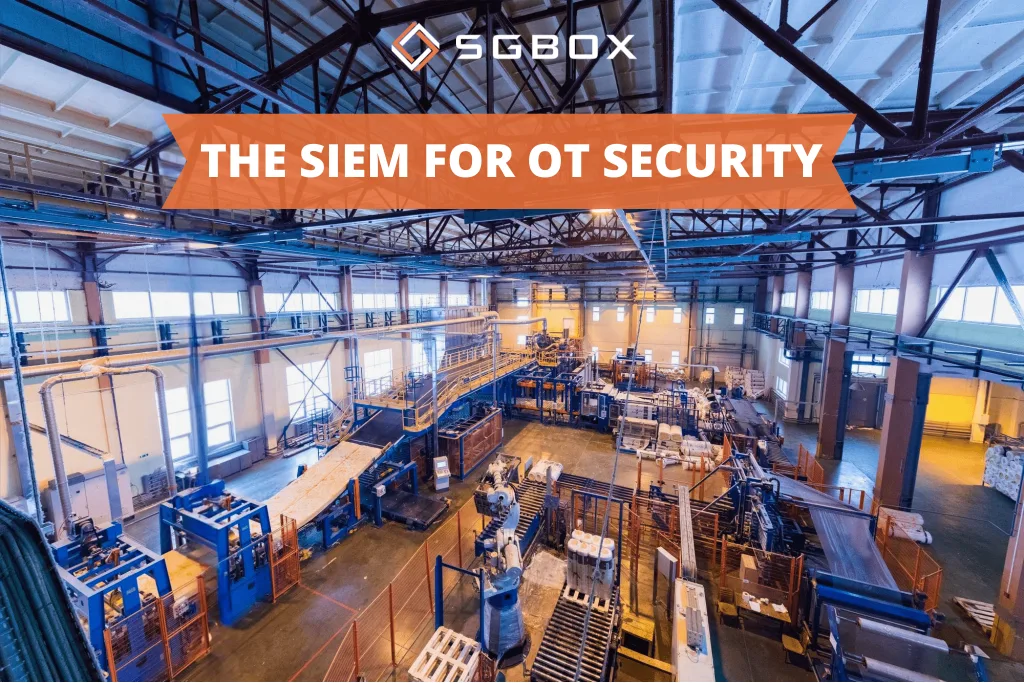The SIEM for OT Security

What is OT Security?
OT Security (Operational Technology Security) refers to the protection of systems and networks that manage and control physical operations in industrial environments and critical infrastructure. These systems include:
- Industrial Control Systems (ICS)
- Supervisory Control and Data Acquisition (SCADA) systems
- Process Control (PLC)
- Industrial Internet of Things (IIoT)
With the emergence of the new Industry 5.0 paradigm and the growth of IoT, the OT devices are increasingly interconnected and capable of generating large volumes of data.
While this trend presents an opportunity due to the convergence of IT and OT systems, it also brings an increase in potential vulnerabilities and cyber threats, which can lead to production stoppages or damage to critical infrastructure.
The adoption of a SIEM solution for OT Security is essential to ensure data availability, integrity, and confidentiality, as well as the operational continuity of industrial processes.
The role of SIEM in OT Security
SIEM (Security Information and Event Management) plays a critical role in OT security by providing a centralized view of security information, gathering, and analyzing data from various sources within the OT infrastructure.
SIEM capabilities include:
Data collection and centralization
SIEM centralizes the collection of data from various sources, such as network devices, servers, firewalls, and industrial control systems.
This centralization is crucial for OT systems as it allows for a unified view of the security status, reducing the risk of missing critical events that could indicate an attack or malfunction.
- Collects logs and events in real-time, facilitating the immediate identification of anomalies.
- Monitors suspicious activities, such as unauthorized access or configuration changes, that could compromise security.
Event correlation & Analysis
One of the main features of SIEM is its ability to correlate events and logs from different sources. This correlation helps identify patterns of abnormal behavior that might not be evident when analyzed individually.
- Analyzes data to identify correlations between events, such as unauthorized access followed by a configuration change.
- Uses machine learning algorithms to enhance threat detection, continuously adapting to new attack patterns.
Incident Response
SIEM not only detects threats but also facilitates a rapid and coordinated response. When a security event is identified, the system can generate alerts and notifications for the security team, enabling timely intervention.
- Automates response actions, reducing the time needed to contain and mitigate incidents.
- Provides tools for incident management, enabling effective collaboration among security team members.
Compliance Management
OT systems often need to comply with stringent regulations. SIEM helps monitor and document activities to ensure compliance with security standards and regulations.
- Generates detailed reports that simplify audit procedures and demonstrate regulatory compliance.
- Identifies and documents security gaps, allowing organizations to take corrective measures.
Noise reduction and efficiency enhancement
Another significant advantage of SIEM is its ability to reduce alert “noise” by filtering out irrelevant events. This is particularly useful in OT systems, where operations must remain efficient and uninterrupted.
- Establishes filters to focus on significant events, reducing alert fatigue among security personnel.
- Improves operational efficiency by monitoring not only threats but also system performance, facilitating predictive maintenance and resource management.
Benefits of its Application
Integrating SIEM into an OT Security strategy offers several significant benefits:
- Real-time threat recognition: the ability to continuously monitor systems helps detect attacks as they occur.
- Automated response: SIEM can automate incident responses, reducing operator workload and improving crisis management effectiveness.
- Regulatory compliance: assists in meeting cybersecurity regulatory requirements, essential for companies in regulated sectors.
- In-depth analysis: SIEM’s advanced analytics enable detailed incident investigation, enhancing future defense strategies.
Main threats to OT Security
The primary threats affecting OT security today include:
- Malware and ransomware: these attacks can compromise OT systems, leading to operational disruptions and data theft. Ransomware, in particular, can cause significant production downtimes if critical data is encrypted and ransom demands are made.
- Phishing and social engineering: attackers use phishing techniques to deceive employees, gaining access to confidential information or installing malware. These attacks are often customized to increase effectiveness.
- Insider threats: malicious or negligent insiders can cause significant harm to OT systems, leveraging their knowledge of processes and vulnerabilities to compromise security.
- Supply Chain attacks: cybercriminals can infiltrate an OT network by compromising suppliers or third parties, exploiting their vulnerabilities to gain access to target systems.
- Zero-day exploits: these attacks exploit unknown software or hardware vulnerabilities before security patches are available, allowing attackers to gain unauthorized access to OT systems.
- DDoS (Denial-of-Service) attacks: attackers may overload systems with excessive traffic, causing slowdowns or interruptions in critical services.
- Man-in-the-middle (MitM) attacks: these allow hackers to intercept and manipulate communications between devices, potentially altering commands or sensor data crucial to operations.
- IoT device vulnerabilities: with the increased use of IoT devices in OT networks, vulnerabilities in these devices can provide entry points for attackers.
- System obsolescence: many OT systems use outdated hardware and software, lacking regular updates, which increases the risk of exploitation by attackers.
Next Generation SIEM by SGBox
SGBox offers a Next-Generation SIEM capable of collecting, analyzing, and managing the large volume of data generated by OT devices.
With customizable correlation rules, the system can monitor the security status of the OT infrastructure in real time and take proactive action in the event of an attack.
The integration with SOAR functionalities further enables automatic countermeasures to reduce the mean time to respond.




